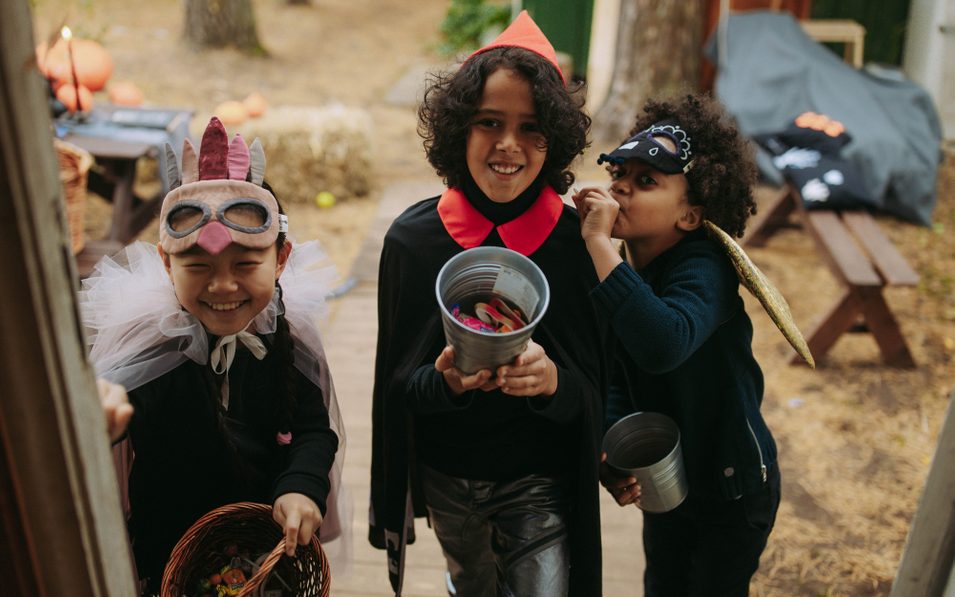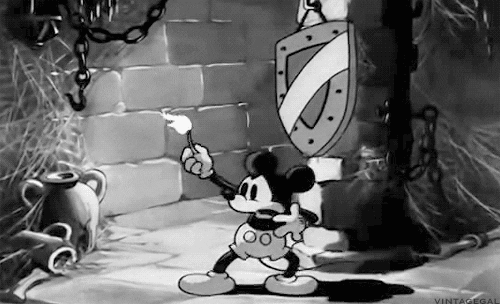
A History of the Halloween Costume
Posted on October 26, 2023
Spooky season is upon us, which means it will soon be time to take your little one(s) Halloween costume shopping! Or perhaps you need to come up with a fun costume idea for work or a costume party. Whether you go for a classic scary costume like a vampire or witch, or a pop-culture based costume like Barbie or Taylor Swift—have you ever wondered how Halloween costumes have changed over time? Or where dressing up for Halloween came from in the first place? As a theatrical institution, costumes are kind of our thing, so lets go on a journey discovering the evolution of the Halloween costume!
Halloween and its familiar traditions of trick-or-treating and dressing up in costumes hasn’t always been the candy-coated, family-friendly holiday we know today. In fact, the origins of Halloween began over 2,000 years ago with the Celts celebrating the pagan holiday known as Samhain, which marks the beginning of winter. This time of year was believed to be when the veil between the dead and the living was the thinnest and people would wear disguises to ward off spirits. This tradition was carried over to North America when Irish immigrants fled famine in the 1840s. Just as traditions like carving turnips to hold candles to keep evil spirits away turned into carving pumpkins instead (because pumpkins were more plentiful in North America), the tradition of legitimately terrifying disguises eventually turned into the more commercial costume-wearing we know today.

Early 20th Century
Costumes weren’t geared toward current events or characters like today, but rather toward spooky themes that were still in the vein of scaring off ghosts or spirits.
During this time, teens and youth donned disguises to hide their identities as they committed “tricks” and pranks, to such violent and problematic extent that it became problematic and cities considered banning the holiday.

1930’s
With the Great Depression elevating violence and vandalism, communities and neighborhoods started more familiar traditions of passing out candy, costume parties, and haunted houses to curb unwanted behavior.
It was around this time that children were afforded more costume options, like that of Mickey Mouse, who made his film debut in 1928’s Steamboat Willy.
Box costumes from department stores like Sears were a luxury many couldn’t afford during the Great Depression, so homemade costumes were still very prevalent.
1940’s
World War II influenced the traditions of Halloween by bringing about the advent of “sexy costumes” stemming from pin-up photos made popular by both Hollywood and the US Government.
Wartime also brought forth rationing of sugar, causing a decrease trick-or-treating and an increase in homemade costumes and masks.

1950’s
Mass-produced box costumes become more affordable to the middle class in the ‘50s and kids started wearing costumes from popular movies and comics like Batman or Frankenstein, in addition to classics like princesses or clowns.
Westerns were very popular in 1950s television, inspiring a spike in cowboy and culturally insensitive portrayals of indigenous peoples.

1970’s
Starting in the ‘60s, but really taking off in the 1970s, came an injection of feminism and politics into Halloween’s costume culture.
For example, 1966’s Cat Woman, played by Julie Newmar, in the Batman TV Series inspired many catsuit costumes.
Presidential masks became more prevalent in the ‘70s with events like Watergate and anti-war marches.
Starting mainly in the 1970s, Halloween became the one night a year that the gay and trans community could freely express their identities. For example, there were laws in San Fransisco against wearing clothing of the opposite sex, so Halloween presented an opportunity to circumvent those laws.
1980’s
Kicking off in the ‘70s and launching us into the ‘80s was a boom in pop-culture related costumes. A new era of horror films emerged making way for iconic costumes of Michael Myers from Halloween, Jason from Friday the 13th, and Freddie Krueger of Nightmare on Elm Street.
A rise in sci-fi and fantasy films like Star Wars and E.T. also spawned a whole new collection of Halloween costumes, thanks to the visionary minds of George Lucas and Steven Spielberg.
1990’s to Today
From the ‘90s onward, the trend of pop culture greatly inspiring Halloween costumes continues.
Popular film-related costumes in the 90s and early 2000s include Marty McFly from Back to the Future, The Terminator, Lloyd and Harry from Dumb & Dumber, Austin Powers, Ghostface from Scream, and characters from Harry Potter.
90s and 2000s pop icons like Britney Spears and the Spice Girls were also very popular costume trends.
If you were a 90s kid, you perhaps dressed up as a Power Ranger for Halloween. (Case in point: this millennial author dressed up as the pink Power Ranger one year.)
TV show characters also made for popular costumes, with the most popular Halloween costume of 2004 being “SpongeBob SquarePants.”
According to the National Retail Federation, in 2023 “participation in Halloween-related activities will resume to pre-pandemic levels, with 69% of consumers planning to celebrate the holiday this year, up from 65% in 2021 and comparable to 68% in 2019.” In 2023, it’s no surprise that a large percentage of costume ideas stem from online searches such as social media platforms Instagram and TikTok, according to Prosper Insights Executive Vice President of Strategy, Phil Rist. Take a peek at what the top costumes of 2022 were below.
Halloween costumes have become a multi-billion-dollar industry with no signs of slowing down, and the intent behind these traditions has changed immensely since their introduction to our country in the mid-1800s. No longer a tactic to ward off evil spirits, Halloween costumes of today serve the purpose of self-expression and acting out our fantasies by dressing up as our favorite character or creature. So, whether you land on a classic costume this year like a mummy or Frankenstein’s monster, or something more modern like Wednesday Addams or Mario—CTC wishes you a Happy Halloween!
References:
https://www.history.com/news/halloween-costume-trends-photos
https://www.history.com/news/halloween-was-once-so-dangerous-that-some-cities-considered-banning-it
https://www.cnn.com/style/article/history-of-halloween-costumes/index.html
https://www.syfy.com/syfy-wire/the-history-of-halloween-costumes
https://voicesofwinchester.org/1832/spotlight/history-of-halloween-costumes/
https://nrf.com/media-center/press-releases/halloween-participation-returns-pre-pandemic-levels-record-spending
https://www.rd.com/list/popular-halloween-costume-year-you-were-born/

